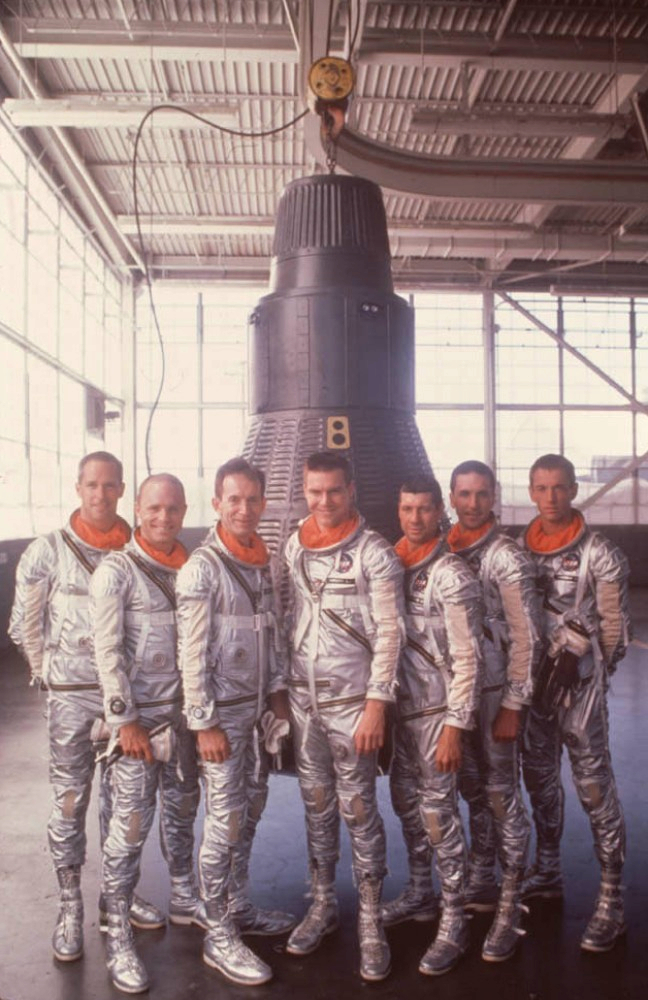The third episode of the 1998 HBO miniseries From the Earth to the Moon, “We Have Cleared the Tower,” is about the return-to-flight mission Apollo 7. More than a year and a half after the tragic Apollo 1 fire, Apollo 7 was the first manned flight of the new Apollo spacecraft, commanded by veteran Mercury astronaut Wally Schirra. The episode portrays the preparations for launch from the perspective of a documentary film crew with access to the launch site and training facilities. The episode ends with (spoiler alert! But it’s in the title) the successful launch of the mission.
As a partial found-footage movie (the footage shot by the documentary crew), the episode does not have a very clear storyline and it fairly meanders toward the inevitable launch. This is not a strong episode for that reason, but there are some interesting meanders along the way. From the Earth to the Moon is, on the whole, rather astronaut-centric, partly because its main source material is the book A Man on the Moon, by Andrew Chaikin. In this episode, the film crew interviews some supporting staff of the space program, including a meteorologist, the astronauts’ nurse Dee O’Hara, a geeky computer technician, and the wisecracking German pad director Gunther Wendt.
In terms of visuals, “We Have Cleared the Tower” is a mixed bag. There are some effective location shots at Launch Complex 37 at Cape Canaveral, with the defunct facility digitally de-aged and a CG Saturn 1B rocket inserted into the frame. The compositing isn’t perfect, but it’s good enough for suspension of disbelief. The studio clearly did not build a physical model of a Saturn 1B (possibly because it would only be needed for this episode), and the CG model looks terrible close-up.
While Part 3 is mediocre, Part 4 “1968” is definitely one of the strongest of the series. “1968” is about the flight of Apollo 8, the first to fly around the moon, and the calamitous year in which the mission took place. The episode intercuts staged scenes of the preparations for Apollo 8 with archival footage of the upheavals of 1968: the Tet Offensive in the Vietnam War, the assassination of Martin Luther King, Jr., the assassination of Robert Kennedy, protests at the Democratic National Convention in Chicago, the Prague Spring, uprisings in France, and the election of Richard Nixon. Use of archival footage can be a crutch or a shortcut around limited resources, but here it is totally effective.
Except for some of the archival footage, the episode is filmed in black and white; color first comes to the frame when the engines of the Saturn V booster ignite at the beginning of the mission. The mission of Apollo 8 is filmed in color, while scenes taking place on the ground continue to be filmed in black and white. The use of color represents the message of the episode: Apollo 8 transcended the problems of the Earth, and in the words of one congratulatory telegram sent to NASA, the mission “saved 1968.”
It was surreal to watch “1968” in 2020 (when I did this rewatch). Both 1968 and 2020 were years of crisis, with at least one common element: civil unrest and violence in the streets. Living through 2020 gave me an idea of what 1968 might have felt like. If only 2020 had had an Apollo 8 too.




Leave a Reply